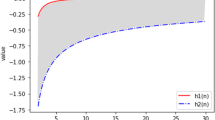Abstract
The Sensitivity-Based Linear Learning Method (SBLLM) is a learning method for two-layer feedforward neural networks based on sensitivity analysis that calculates the weights by solving a linear system of equations. Therefore, there is an important saving in computational time which significantly enhances the behavior of this method as compared to other batch learning algorithms. The SBLLM works in batch mode; however, there exist several reasons that justify the need for an on-line version of this algorithm. Among them, it can be mentioned the need for real time learning for many environments in which the information is not available at the outset but rather, is continually acquired, or in those situations in which large databases have to be managed but the computing resources are limited. In this paper an incremental version of the SBLLM is presented. The theoretical basis for the method is given and its performance is illustrated by comparing the results obtained by the on-line and batch mode versions of the algorithm.
Access this chapter
Tax calculation will be finalised at checkout
Purchases are for personal use only
Preview
Unable to display preview. Download preview PDF.
Similar content being viewed by others
References
Rumelhart, D.E., Hinton, G.E., Willian, R.J.: Learning Representations of Back-Propagation Errors. Nature 323, 533–536 (1986)
Castillo, E., Guijarro-Berdiñas, B., Fontenla-Romero, O., Alonso-Betanzos, A.: A very fast learning method for Neural Networks Based on Sensitivity Analysis. Journal of Machine Learning Research 7, 1159–1182 (2006)
Castillo, E., Fontenla-Romero, O., Alonso-Betanzos, A., Guijarro-Berdiñas, B.: A Global Optimum Approach for One-Layer Neural Networks. Neural Computation 14(6), 1429–1449 (2002)
Erdogmus, D., Fontenla-Romero, O., Principe, J.C., Alonso-Betanzos, A., Castillo, E.: Linear-Least-Squares Initialization of Multilayer Perceptrons Through Backpropagation of the Desired Response. IEEE Transactions on Neural Network 16(2), 325–337 (2005)
Fontenla-Romero, O., Erdogmus, D., Principe, J.C., Alonso-Betanzos, A., Castillo, E.: Linear least-squares based methods for neural networks learning. In: Kaynak, O., Alpaydın, E., Oja, E., Xu, L. (eds.) ICANN 2003 and ICONIP 2003. LNCS, vol. 2714, pp. 84–91. Springer, Heidelberg (2003)
Bottou, L.: Stochastic Learning. In: Bousquet, O., von Luxburg, U., Rätsch, G. (eds.) Machine Learning 2003. LNCS (LNAI), vol. 3176, pp. 146–168. Springer, Heidelberg (2004)
Moller, M.: Supervised learning on large redundant training sets. Neural Networks for Signal Processing II, 79–89 (1992)
LeCun, Y.A., Bottou, L., Orr, G.B., Müller, K.-R.: Efficient backProp. In: Orr, G.B., Müller, K.-R. (eds.) NIPS-WS 1996. LNCS, vol. 1524, p. 9. Springer, Heidelberg (1998)
Collobert, R., Bengio, Y., Bengio, S.: Scaling large learning problems with hard parallel mixtures. International Journal of Pattern Recognition and Artificial Intelligence 17(3), 349–365 (2003)
Newman, D., Hettich, S., Blake, C., Merz, C.: UCI repository of machine learning databases (1998), http://www.ics.uci.edu/~mlearn/MLRepository.html
Mangasarian, O.L., Ramakrishnan, R.: Data Mining Intitute, Computer Sciences Department, University of Wisconsin (1999), http://www.cs.wisc.edu/dmi
Author information
Authors and Affiliations
Editor information
Editors and Affiliations
Rights and permissions
Copyright information
© 2010 Springer-Verlag Berlin Heidelberg
About this paper
Cite this paper
Pérez-Sánchez, B., Fontenla-Romero, O., Guijarro-Berdiñas, B. (2010). An Incremental Learning Method for Neural Networks Based on Sensitivity Analysis. In: Meseguer, P., Mandow, L., Gasca, R.M. (eds) Current Topics in Artificial Intelligence. CAEPIA 2009. Lecture Notes in Computer Science(), vol 5988. Springer, Berlin, Heidelberg. https://doi.org/10.1007/978-3-642-14264-2_5
Download citation
DOI: https://doi.org/10.1007/978-3-642-14264-2_5
Publisher Name: Springer, Berlin, Heidelberg
Print ISBN: 978-3-642-14263-5
Online ISBN: 978-3-642-14264-2
eBook Packages: Computer ScienceComputer Science (R0)




